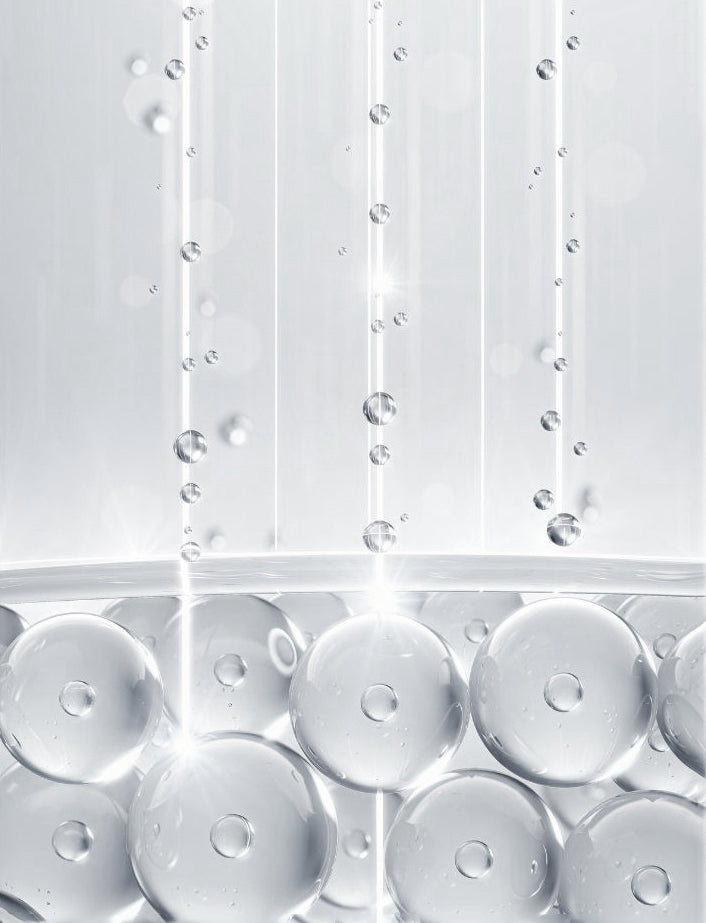We've all heard the buzz about hyaluronic acid (HA), the skincare superstar that promises to hydrate, plump, and rejuvenate our skin. But did you know that not all hyaluronic acids are created equal? When it comes to this skincare wonder, size matters – and we're here to spill the secrets behind the different molecular weights of hyaluronic acid and how they work their magic.
The Tale of Molecular Weights
Picture your skin as a multi-layered fortress, with each layer playing a unique role in keeping it healthy and radiant. HA, the natural skin-protector extraordinaire, resides in the cutaneous region – the outermost layer that faces the world. Within this layer, HA molecules come in various sizes, ranging from 50kDa to a hefty 3000kDa (Mazzucco, 2019).
So, who are the HA architects behind the scenes? Let's meet the cast:
1. Fibroblasts: These unsung heroes contribute to the creation of collagen, connective tissues, and, of course, HA.
2. Keratinocytes: The MVPs of skin repair, these are the most common skin cells that help in the healing process.
3. Endothelial Cells: These blood vessel lining wonders not only regulate exchanges between blood and tissue but also play a part in HA production.
The Weighty Benefits
HA molecules, like a dynamic trio, fall into three categories based on size: Low (LMW), Medium (MMW), and High Molecular Weights (HMW). Let's unveil the secrets each size holds:
High Molecular Weight (HMW)
These hefty molecules (over 1000 kDa) may not penetrate the skin's outermost layer, but they form an invisible shield, a fortress against evaporation. Think of it as a moisture-locking barrier that keeps dehydration at bay, leaving your skin supple and plump. Plus, they're not just hydrating – they're wound-healing heroes and anti-inflammatory defenders (Tavianatou, et al., 2019).
Medium Molecular Weight (MMW)
With a weight ranging from 250 to 1000 kDa, these middleweights have the golden ticket – they penetrate the epidermis and deliver hydration below the surface. They interact with skin's surface receptors, striking a balance between the outer and inner layers.
Low Molecular Weight (LMW)
The tiny giants of the HA world (10 to 250 kDa), they venture through the epidermis into the subcutaneous realm. Here, they pull double duty – encouraging collagen production and filling in fine lines. They're like the architects of smoothness, working their magic beneath the surface. But that's not all – they also play conductor, guiding cells through their life cycles (Tavianatou, et al., 2019).
HA Dream Team: Science Behind the Scenes
Imagine a symphony of different molecular weights working in harmony – that's the beauty of combining all three types of HA. A 2019 study from the University of Bologna in Italy put HA solutions of varying molecular weights to the test:- Solution A: HA weighing between 1,000-1,800 kDa
- Solution B: HA weighing between 50-2,500 kDa
The results were impressive – both solutions held their ground, but solution B stole the spotlight with its wrinkle-erasing prowess (Mazzucco, 2019). It's all about balance and synergy – a mix of HA sizes creates the ultimate recipe for defying aging and undoing wrinkles.
From Lab to Vanity: HA's Rising Star
As our understanding of HA grows, so does its role in skincare. The beauty industry's fascination with HA is evident in its integration into dermo cosmetic products and everyday skincare essentials. Even minimal amounts of HA can make a remarkable difference, a testament to its versatility and power.So, next time you spot those three magic letters on your skincare products, remember that it's not just about hyaluronic acid – it's about the molecular weight magic that makes your skin glow, plump, and defy the passage of time. With HA, size truly matters, and now you're in on the secret!


